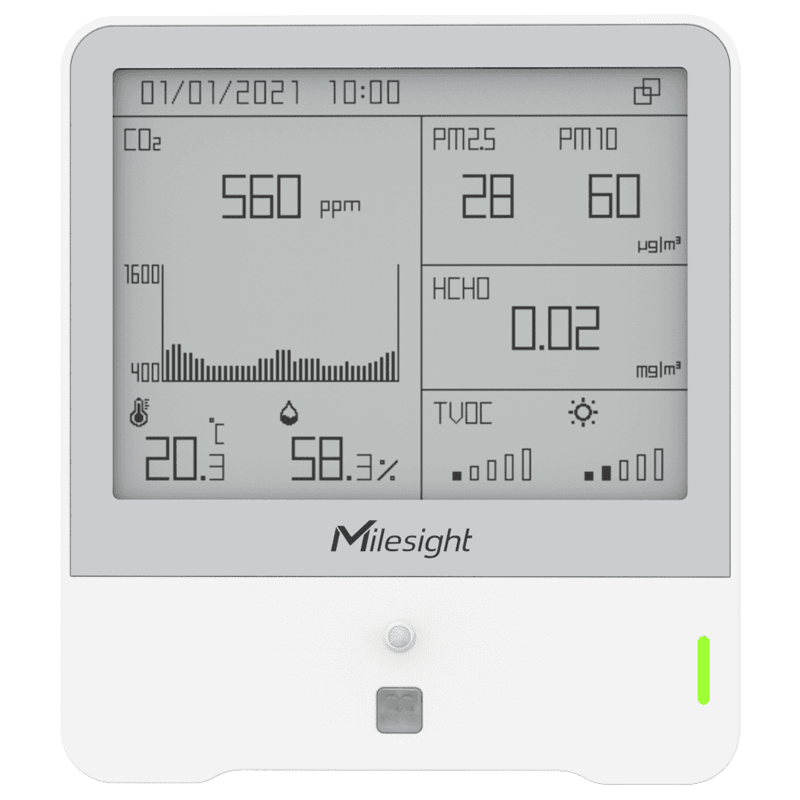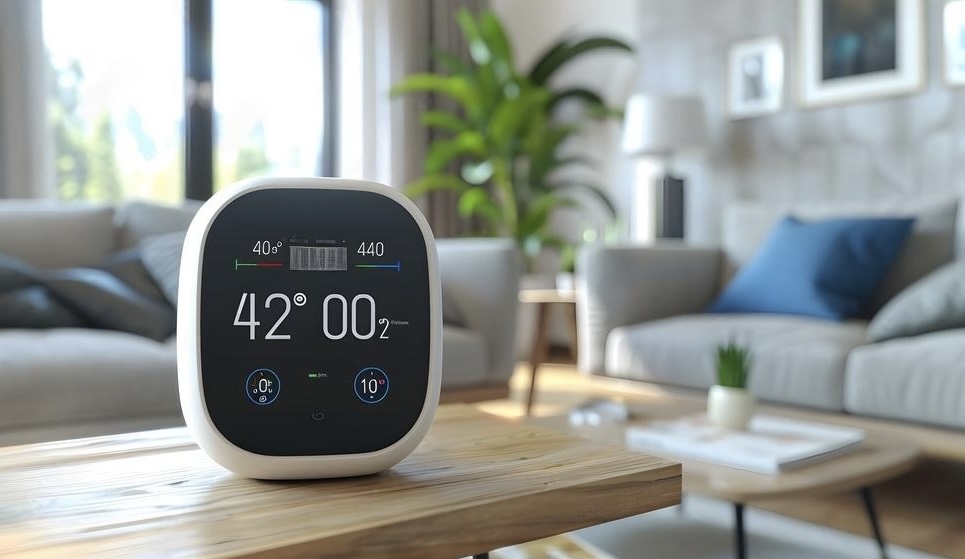Last updated on June 5th, 2025 at 08:52 pm
Imagine walking into a workspace with clean, fresh air that invigorates your senses and boosts productivity. Achieving optimal indoor air quality (IAQ) is not just a matter of comfort; it’s essential for the health and well-being of building occupants. In the realm of facilities management, IAQ monitoring has become increasingly crucial, and with the advent of IoT (Internet of Things) technology, it’s easier than ever to ensure a healthy indoor environment. In this article, we delve into what indoor air quality monitoring is, its importance in facilities management, and the diverse use cases it presents.
Understanding Indoor Air Quality Monitoring and Its Importance:
What is Indoor Air Quality Monitoring? Indoor air quality monitoring involves the continuous assessment and analysis of air pollutants, such as particulate matter, volatile organic compounds (VOCs), and carbon dioxide (CO2), within enclosed spaces. By measuring and monitoring these pollutants, facility managers can identify potential health risks, improve ventilation systems, and create healthier indoor environments.
Importance in Facilities Management:
1. Health and Well-being: Poor indoor air quality can have detrimental effects on the health and well-being of building occupants, leading to respiratory issues, allergies, and other health problems. IAQ monitoring allows facility managers to identify sources of indoor air pollution, mitigate risks, and create healthier environments that promote productivity and overall well-being.
2. Compliance and Regulations: Many countries have established regulations and guidelines for indoor air quality to ensure the safety and health of occupants in public buildings and workplaces. IAQ monitoring helps facility managers comply with these regulations by providing data on pollutant levels and ventilation effectiveness, enabling them to take necessary actions to maintain compliance.
3. Energy Efficiency: Optimizing indoor air quality can also contribute to energy efficiency in buildings. By monitoring pollutant levels and ventilation systems, facility managers can adjust airflow rates and HVAC settings to maintain optimal IAQ while minimizing energy consumption. This not only reduces operational costs but also lowers carbon emissions and environmental impact.
4. Occupant Comfort and Productivity: Clean, fresh air is essential for creating a comfortable and productive indoor environment. IAQ monitoring helps facility managers identify and address factors that affect occupant comfort, such as temperature fluctuations, humidity levels, and air pollutants. By maintaining optimal IAQ, facility managers can enhance occupant satisfaction and productivity.
Use Cases in Facilities Management:
1. Office Buildings: In office buildings, IAQ monitoring is essential for maintaining a healthy and productive work environment. By monitoring pollutant levels and ventilation systems, facility managers can address issues such as poor air circulation, high levels of CO2, and VOC emissions, ensuring a comfortable and healthy workspace for employees.
2. Healthcare Facilities: In healthcare facilities, where patient health is of utmost importance, IAQ monitoring plays a critical role in preventing the spread of airborne infections and maintaining sterile environments. By monitoring air quality parameters, such as particulate matter and airborne pathogens, facility managers can implement effective ventilation strategies and infection control measures to safeguard patient health.
3. Schools and Educational Institutions: In schools and educational institutions, IAQ monitoring is essential for creating a conducive learning environment for students and teachers. By monitoring indoor air quality parameters, such as CO2 levels and humidity, facility managers can identify areas with poor ventilation and implement measures to improve air circulation, ensuring a healthy and comfortable learning environment.

Integration with FacilityBot CMMS: FacilityBot’s CMMS solution seamlessly integrates with IoT sensors, including IAQ sensors such as Ambience Monitoring Sensor, 7-in-1 IAQ Sensor, and 9-in-1 IAQ Sensor, available at FacilityBot IoT Sensor store. This integration empowers facility managers to:
- Monitor IAQ Parameters: Utilize real-time data from IAQ sensors to monitor indoor air quality parameters, such as temperature, humidity, CO2 levels, and VOC concentrations, ensuring a healthy indoor environment for building occupants.
- Identify Trends and Patterns: Analyze historical IAQ data to identify trends and patterns in air quality, enabling proactive maintenance and preventive measures to address potential issues before they escalate.
- Optimize Ventilation Systems: Use IAQ data to optimize ventilation systems, adjust airflow rates, and improve indoor air circulation, enhancing occupant comfort and well-being while maximizing energy efficiency.
Conclusion: In conclusion, indoor air quality monitoring is a critical aspect of facilities management, ensuring the health, safety, and well-being of building occupants. By integrating IAQ sensors with FacilityBot’s CMMS solution, facility managers can harness the power of IoT technology to monitor, analyze, and optimize indoor air quality, creating healthier and more comfortable indoor environments. Visit FacilityBot to learn more about our CMMS solution and IoT integration capabilities.

